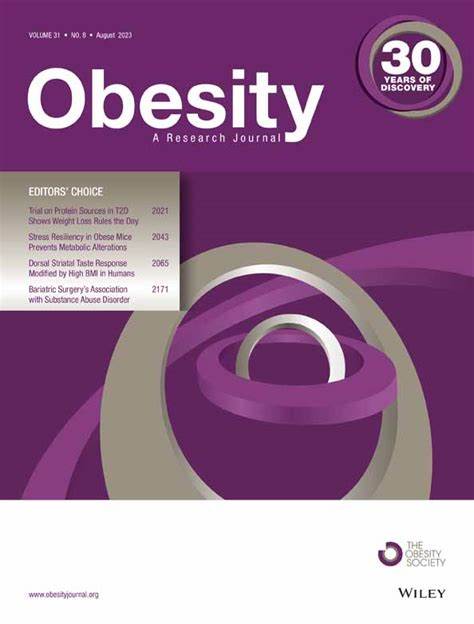Fat taste sensitivity in women with obesity: transcriptomic analysis of fungiform papillae before and after bariatric surgery
Abstract
Objective
Fat taste sensitivity has been implicated in long-term weight loss after bariatric surgery. Unexpectedly, improvement of orosensory fat acuity was not systematic in operated patients.
Methods
Obesity-induced alterations of gene expression in gustatory papillae having been recently reported, we have explored the fungiform transcriptomic activity in the bariatric surgery context. Fat taste detection thresholds (three-alternative ascending forced-choice tests) alongside transcriptomic profiling of freshly isolated fungiform papillae were assessed in women with severe obesity before and 6 months after sleeve gastrectomy.
Results
According to evolution of post surgery detection thresholds, lipid-improved and -unimproved subgroups were identified, despite similar initial anthropometric parameters. Lower weight loss and higher plasma fasting insulin, C-reactive protein, and fibrinogen levels distinguished lipid-unimproved patients. This subgroup also overexpressed genes involved in inflammation and apoptosis, with certain ones being positively correlated with high lipid detection thresholds (low sensitivity), whereas the key gene of taste bud cell signaling, TRPM5, was down-expressed. In lipid-improved patients, genes implicated in cell renewal, neuronal function, and receptor recycling were upregulated and associated with better lipid detection efficiency. Pathway enrichment identified immune and anti-inflammatory activities in lipid-unimproved and -improved groups, respectively.
Conclusions
These findings collectively suggest that changes in gene expression within gustatory papillae contribute to fat taste sensitivity after sleeve gastrectomy.


 求助内容:
求助内容: 应助结果提醒方式:
应助结果提醒方式:


